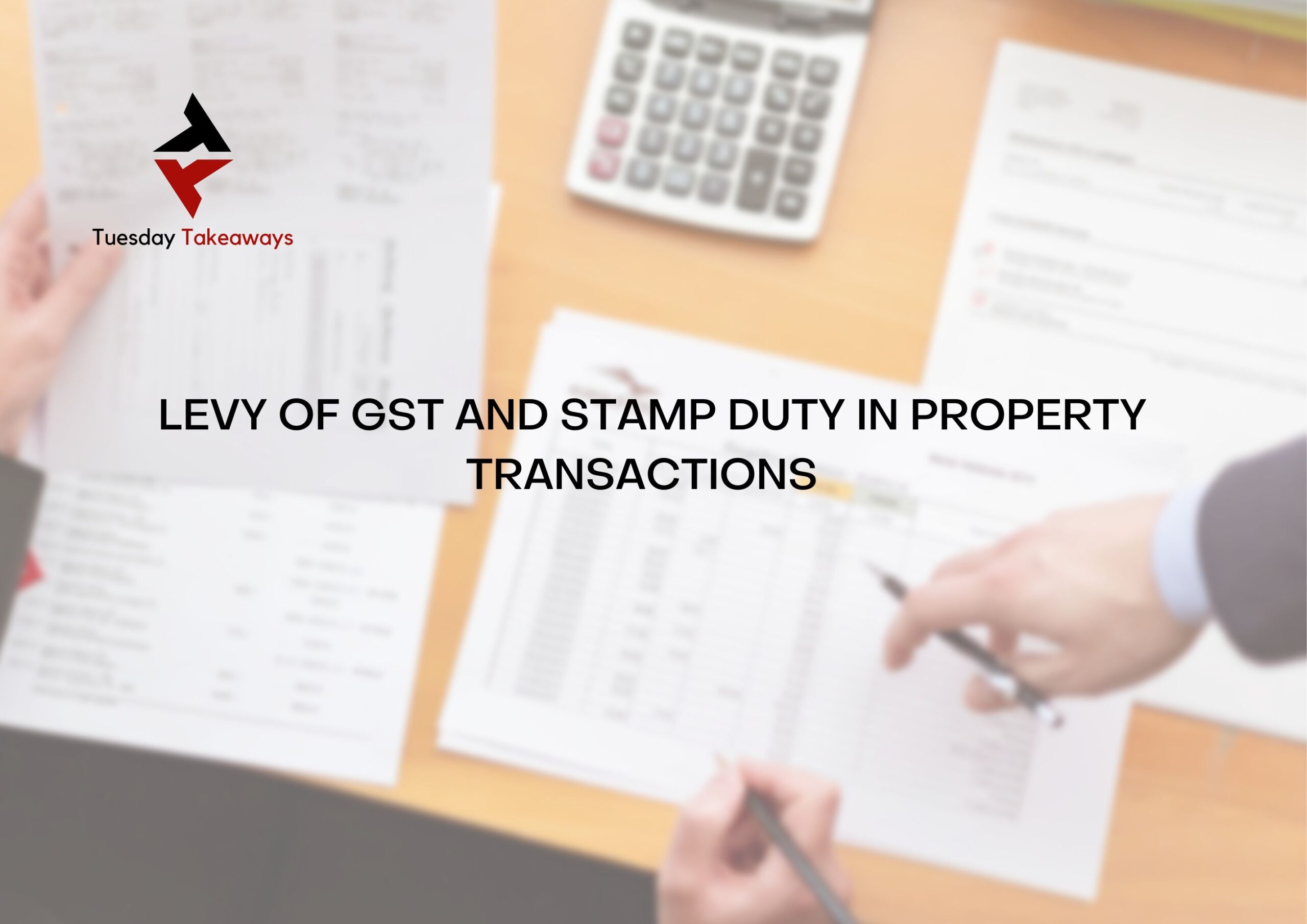
INTRODUCTION
The Indian Taxation regime received a major overhaul with the introduction of the Goods and Services Tax (hereinafter referred to as the “GST”) through the 101st Constitutional Amendment. The GST has been introduced to subsume various other taxes like service tax, excise duty, service tax, value added tax, central sales tax, purchase tax, entertainment tax, octroi, and others.
The GST provides for a single tax on the supply of goods and services, right from manufacturers to the consumer and only the addition in the value is being taxed at each level. Even though the majority of taxes are subsumed under GST, it has not repealed certain indirect taxes like stamp duty and is still to be paid in accordance with the prescribed rates of the respective states.
This blog shall discuss the interplay between GST and Stamp Duty and its impact on property transactions.
TAXATION IN PROPERTY TRANSACTIONS
With the evolution of the State as a Welfare State, there is a need for the generation of higher revenue for the better administration of the State; which is done through the imposition of taxes both directly and indirectly. One such important sources of revenue for the Government is Stamp Duty.
Stamp Duty is imposed on the instrument which effects such transfer of property and is calculated based on the value of the property. Hence, stamp duty has a significant impact on the real estate sector in India, as, during each transaction of transfer of property, stamp duty is payable.
It is pertinent to note that, GST is also applicable on particular real estate transactions. Under the GST regime, a single rate of 12% is applicable on under-construction properties whereas no GST is applicable on completed or ready to sale properties only if the Completion Certificate (CC) has been issued.
In March 2019, the GST Council has reduced the tax rates to 5% from 12% on residential properties and to 1% from 8% for the affordable housing segment. However, Input Tax Credit (hereinafter referred to as “ITC”) benefits will not be available under the new tax rate slabs. However, since the Stamp Duty is payable on the instrument, it is to be paid in both instances i.e. when the property is under construction as well as when it is completed.
INTERPLAY BETWEEN GST AND STAMP DUTY
GST is not applicable on the transactions of land, only stamp duty is applicable, and the rates differ on the valuation of the property and the state where it is applicable. The Gujarat Authority for Advanced Ruling in Advance Ruling no. GUJ/GAAR/R/2020/11 dated 19.05.2020, observed that the GST is not payable when the transfer is relating to a plot of land but the sale of developed plots attracts GST, as it is different from the sale of land.
GST is applicable on the plot of lands where the basic structure is developed, as it inevitably falls under the Schedule II Para 5 clause (b) of the Central Goods and Services Tax Act, 2017 (hereinafter referred to as the “CGST Act”), which states that any construction of a building complex, civil infrastructure or part thereof, comprising of a building or complex aimed to be sold to a buyer is the supply of service and thus, will attract GST.
In such a case, the seller can charge GST on the consideration amount for providing the added amenities. However, there is an exception to it. If the entire consideration has been received after obtaining the completion certificate, then GST will not be applicable.
In accordance to Schedule II Para 2(a) of the CGST Act, renting and leasing of land is considered as a supply of services and hence, is taxable. In the case of Union Bank of India v. Collector of Stamps/SDM [(2019) 199 AIC 577GST], it was held that GST was to be included as a part of the lease rental for the purposes of the calculation of the stamp duty. Hence, the stamp duty is payable on every real estate transaction, as it is applicable to the instrument. Whereas, GST is not applicable on the sale of land and the property that has received a completion certificate.
AMLEGALS REMARKS
There exists an intersection of both GST and Stamp Duty in some properties where both the taxes are payable and in a few, only Stamp Duty is payable. With the introduction of GST, the robust taxation regime in India has become less complex but it has not subsumed Stamp Duty and Property tax, which means that stamp duty would be applicable on the transactions pertaining to the sale of land. This implies that even when one indirect tax is levied upon the property transaction, another indirect tax can be levied.
In case of Stamp Duty calculation however there arises a need to include GST imposed on it as well. The objective of subsuming all the indirect taxes under the GST regime has not succeeded in its true sense due to the application of other taxes along with GST. Moreover, there are two taxes applicable on a single transaction, which further negates the idea of one nation one tax.
– Team AMLEGALS assisted by Mr. Niloy Ghosh (Intern)
For any queries or feedback, please feel free to get in touch with chaitali.sadayet@amlegals.com or himanshi.patwa@amlegals.com .
